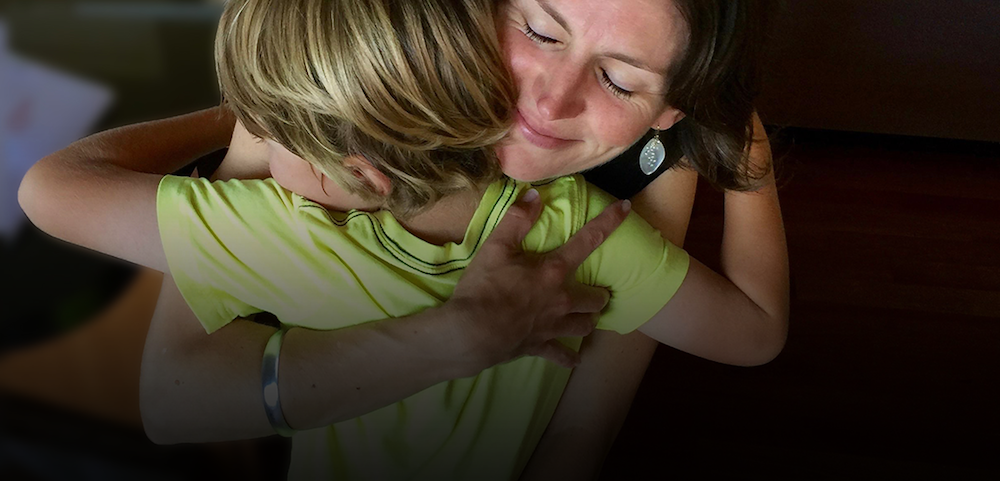What happens when we feel empathy for another person? What are you feeling when that chronically anxious student sinks further into his chair or your teenage girl sobs through her closed bedroom door?
Empathy, or the capacity to “feel with” and share others’ emotions, can be a beautiful gift that connects us with each other. Yet it can also feel heart-wrenching and even unbearable at times. Researchers tell us that our initial empathic responses can shift in one of two directions—toward empathic distress or empathic concern.
Empathic distress, associated with negative feelings, can lead to withdrawal, poor health, and burnout. Empathic concern, on the other hand, can lead to positive feelings, good health, and the desire to help.
Empathic concern, with its focus on others, can motivate us to relieve another person’s suffering, yet empathic distress can leave us trapped in our own suffering because it is a more self-focused response—an emotional tailspin of sorts.
If you frequently experience distress when you empathize with someone else, there is a biological basis for your heartache. A review of multiple brain imaging studies tells us that the person directly experiencing pain and the person empathizing with that pain can share very similar brain activation patterns.
However, when you experience empathic concern, you aren’t necessarily sharing the same painful feelings as the other person (e.g., sadness or fear). In fact, you may also be quite aware that you are distinct and different from the suffering person near you.
So, how can you protect yourself from emotional distress and differentiate from the suffering student or friend or family member in your life without becoming indifferent to that person? How can you nurture empathic concern and better navigate empathic distress? Here are some strategies.
1. Check in With Yourself
You see the fearful child in your classroom overwhelmed by her emotions again. Your heart is over there across the room with her, and you’re at a loss, emotionally. The trouble? In that state, you can’t help her.
This is what researchers Robin Stern and Diana Divecha call the “empathy trap.” When you notice yourself feeling distressed by someone else’s struggle, it’s worth pausing, taking a breath, and asking yourself exactly what you are feeling. What do you need right now? When and how might you respond to this child?
Those of us in the helping professions need to foster this level of conscious self-awareness on a regular basis. I’ve talked with many teachers who often feel as if their emotional energy is dispersed throughout their classroom, and they aren’t sure where to find themselves in the process.
There is a reason why we all keep using the oxygen mask analogy. It’s critical—not selfish—to check your own mask first (i.e., “Do I have what I need to move forward? Have I taken a deep breath and sensed my feet on the ground? Am I calm, composed, and able to respond thoughtfully?”). Otherwise, you may perpetuate feelings of distress and be unable to reach out with genuine empathic concern in the first place.
2. Question Your Thoughts and Feelings
If you are navigating particularly distressful feelings, which are inevitably intertwined with thoughts and behaviors, consider one of the most research-based strategies for managing difficult emotions: cognitive reappraisal.
This involves changing your interpretation of a situation or event. It can help to lessen both emotional and physical feelings of anxiety, and it can also be used to reduce depression after stressful experiences.
If you are empathizing with a child in pain (or just feeling frustration, fear, or sadness), you can ask yourself a series of questions, whether in that moment or later in the day:
- What is the situation that triggered me?
- What am I thinking or imagining?
- What does this thought make me feel?
- What makes me think the thought is true or accurate?
- What makes me think the thought is not true or, at least, not completely true?
- Is there another way to look at this? If so, what is it?
- Is there an action I might choose to take right now?
By regularly questioning your thinking in a structured way, you can begin to shift your perspective, tone down distressful feelings, and ultimately respond more thoughtfully to your students and colleagues.
3. Practice Verbalizing Your Feelings
Another strategy to consider is simply naming your feelings with other trusted friends or colleagues.
In a recent study of health care professionals who received Non-Violent Communication(NVC) training, those who more frequently expressed their feelings during the training saw a reduction in empathic distress three months afterward.
Non-violent communication processes focus on expressing and receiving empathy for feelings and basic human needs, deeply listening to one another, and drawing on our innate capacity for compassion and connection. Participants in this study focused on expressing and responding to strong emotions like frustration and anger while they discussed real communication challenges at work. Facilitators provided tools and prompts for discussions while modeling how to engage in non-violent communication.
Participants who gave more clear and simple statements of feeling (e.g. “I feel satisfied/content/glad/happy” or “I feel disappointed/irritated/distressed/under pressure”), recorded and counted by researchers during group discussions, were also better able to manage work stressors later, when compared to a control group with no communication training.
Researchers speculate that NVC training may reduce empathic distress because it helps people to distance themselves from their emotions. If you can identify, name, and accept an emotion (whether out loud or in your mind), the emotion may lose some of its intensity.
4. Nurture a Concerned, Compassionate Response
Perhaps more than non-violent communication training, compassion training proves to be helpful in reducing empathic distress. Researchers tell us that we experience empathic concern and compassion similarly and that both can lead us to help others—unlike empathic distress. Compassion includes both concern for another’s suffering along with a desire to help alleviate that suffering.
An eight-week compassion course I took last year sensitized me to my experience of empathic distress (particularly as a mom) and helped me to hold my feelings of distress while practicing the skill of differentiating myself from my child. I have ultimately been able to reach out to my child and my students from a place of greater strength since then. It’s not always easy, but the meditations at the heart of compassion training have helped me to regularly practice a few key skills: observing my empathic feelings, visualizing myself as distinct from the suffering person I care about, and sending concern and good feelings outward.
Compassion training often features “loving-kindness” meditation, where you extend feelings of warmth and care toward yourself, a close person, a neutral person, a person in difficulty, and a complete stranger. Research shows that regular mindfulness meditation enhances our ability to respond compassionately to the distress of other people. There is also a more specialized compassion meditation. Finally, Stanford’s eight-week Compassion Cultivation Training focuses on developing empathic concern, compassion, and kindness for yourself and others through mindfulness practices (like the ones above), as well as discussions and activities that draw on psychology and compassion research.
There are tools at our disposal to help us navigate difficult emotions and emerge with a greater capacity to be present and helpful to our students, family, and friends. By checking in with ourselves, questioning our thoughts and feelings, verbalizing our feelings, and nurturing compassionate concern through mindfulness practices, we can become more resilient at work and at home.










